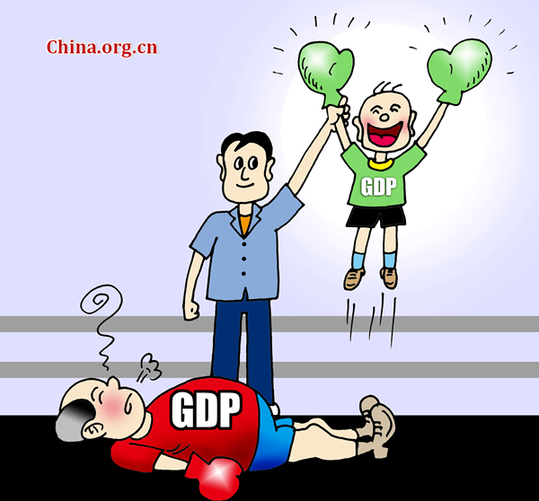A reasonable look at China's GDP (I)
- By Xia Changjiang
 0 Comment(s)
0 Comment(s) Print
Print E-mail China.org.cn, March 3, 2016
E-mail China.org.cn, March 3, 2016
|
|
|
Quality matters [By Gu Peili/China.org.cn] |
There are always doubts over China's economic growth both domestically and overseas. However, the statistics released by credible international organizations, such as the United Nations Statistics Division, International Monetary Fund and World Bank, show little difference from the numbers issued by the Chinese government.
It's natural that statistics developed by different organizations differ slightly, but that's no reason to doubt Chinese calculations.
Most of those who express doubts about China's numbers probably aren't quite clear how to calculate GDP, especially when China adopts a different approach from the West.
GDP deflator
One of the major doubts occurs over what is known as the GDP deflator, which measures the ratio of nominal to real GDP. To some extent, the figure shows the changes of real values.
Some critics have argued that China's GDP deflator is excessively below the Consumer Price Index (CPI), which also reflects the changes of real values. They doubted if China is deliberately underestimating deflation to raise the real GDP growth rate to a more impressive level.
There are four reasons why this is unreasonable.
First, those expressing such doubts might be using the wrong approach to calculate GDP. There are three ways of doing this: the production, the income and the expenditure approach. While most Western countries use the expenditure approach, China frequently adopts the production approach; the GDP deflator calculated by the former is usually higher than the latter.
Second, they might not have acquired all the necessary data. If you use the production approach, you need to have at least 26 price indices, which have different weights during calculation. However, what indices are being used and how much weight they are given is not known to most members of the public, so it's natural that results differ.







Go to Forum >>0 Comment(s)